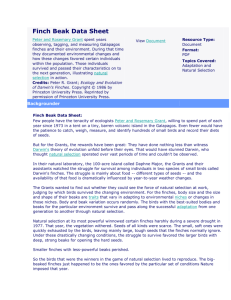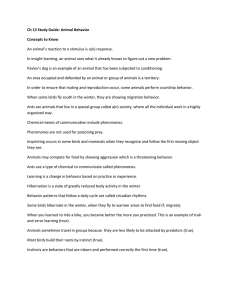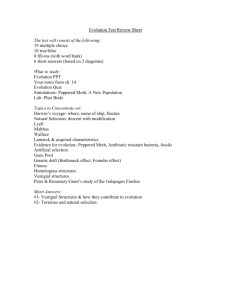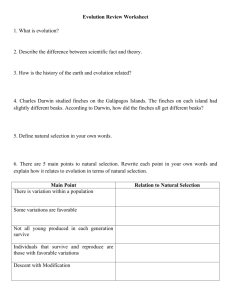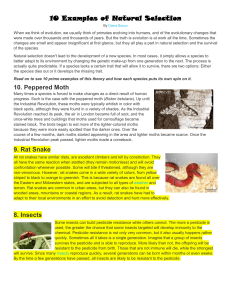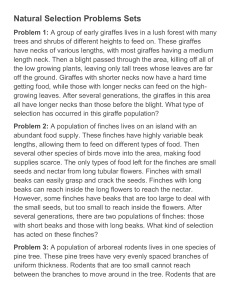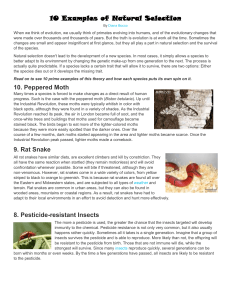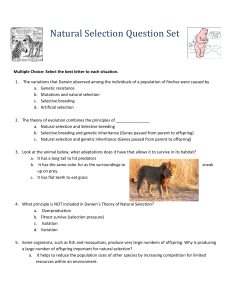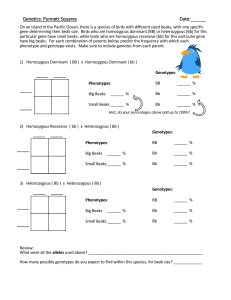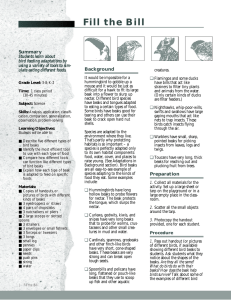Types of Natural Selection and Evolution
advertisement
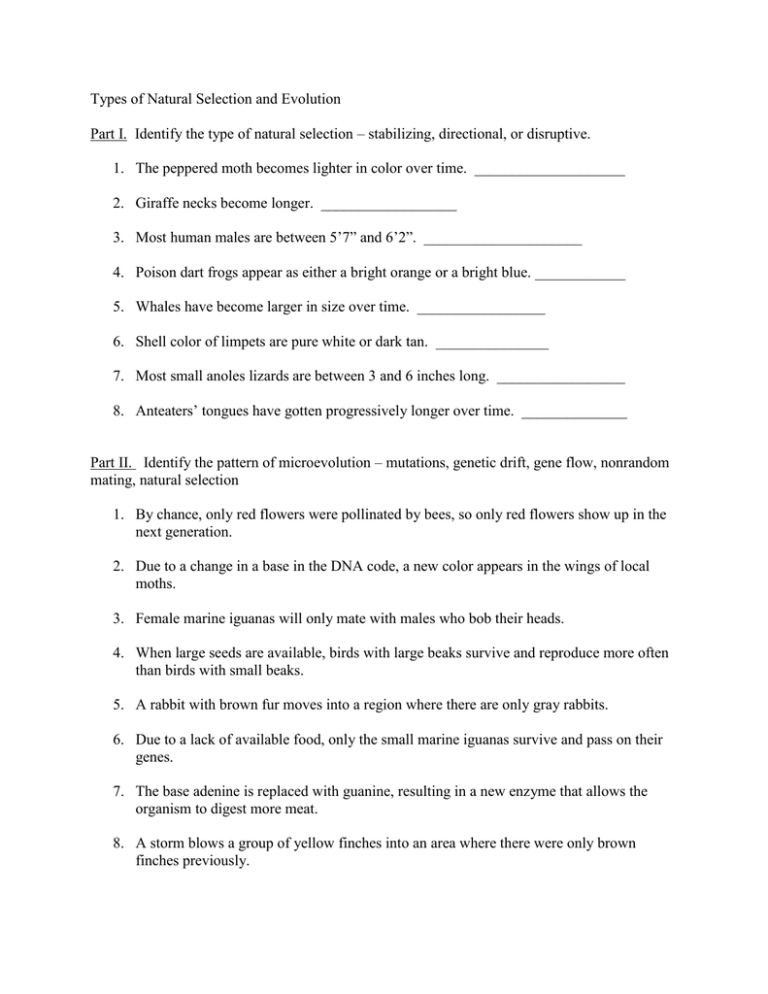
Types of Natural Selection and Evolution Part I. Identify the type of natural selection – stabilizing, directional, or disruptive. 1. The peppered moth becomes lighter in color over time. ____________________ 2. Giraffe necks become longer. __________________ 3. Most human males are between 5’7” and 6’2”. _____________________ 4. Poison dart frogs appear as either a bright orange or a bright blue. ____________ 5. Whales have become larger in size over time. _________________ 6. Shell color of limpets are pure white or dark tan. _______________ 7. Most small anoles lizards are between 3 and 6 inches long. _________________ 8. Anteaters’ tongues have gotten progressively longer over time. ______________ Part II. Identify the pattern of microevolution – mutations, genetic drift, gene flow, nonrandom mating, natural selection 1. By chance, only red flowers were pollinated by bees, so only red flowers show up in the next generation. 2. Due to a change in a base in the DNA code, a new color appears in the wings of local moths. 3. Female marine iguanas will only mate with males who bob their heads. 4. When large seeds are available, birds with large beaks survive and reproduce more often than birds with small beaks. 5. A rabbit with brown fur moves into a region where there are only gray rabbits. 6. Due to a lack of available food, only the small marine iguanas survive and pass on their genes. 7. The base adenine is replaced with guanine, resulting in a new enzyme that allows the organism to digest more meat. 8. A storm blows a group of yellow finches into an area where there were only brown finches previously. 9. The female bird-of-paradise will only mate with the male who dances in a certain way for her. 10. For unknown reasons, only the black mice mated in the spring, so no white mice were seen in the following months. Part III. Identify the pattern of macroevolution – coevolution, convergent evolution, or divergent evolution. 1. Sharks and porpoises have the same fin formations. __________________ 2. Primitive flatworms evolved into jellyfish and parasitic roundworms. ________________ 3. Moth-pollinated plants often have spurs or tubes the exact length of a certain moth’s “tongue.” ________________ 4. Birds and bats both have wings for flight. ____________________ 5. Primitive algae split into gymnosperms and angiosperms. ________________ 6. Songbirds have evolved different beaks for seed-eaters and worm-eaters. __________________ 7. 20 species of Honeycreepers in Hawaii have evolved to feed on different diets. ___________________ 8. Acacias trees have large, hollow thorns in which ants live. On the tips of its leaflets, the plant makes a substance used by the ants as food. The ants defend the tree from herbivores by attacking/stinging any animal that even accidentally brushes up against the plant, and prune off seedlings of any other plants that sprout under “their” tree. ____________________

